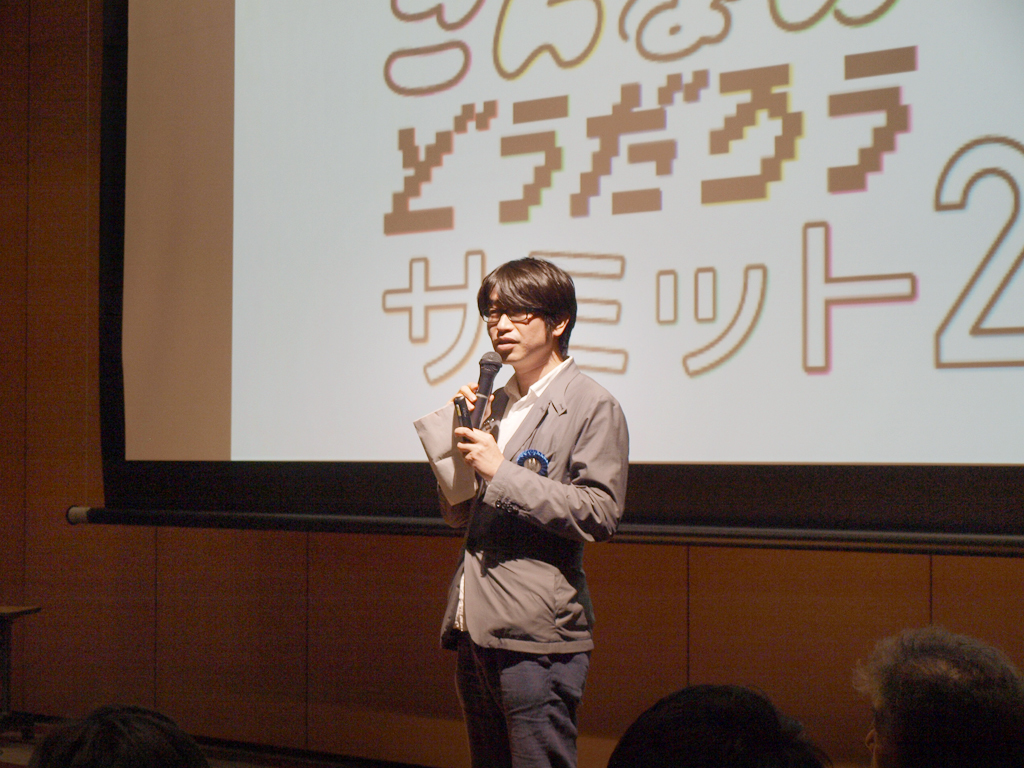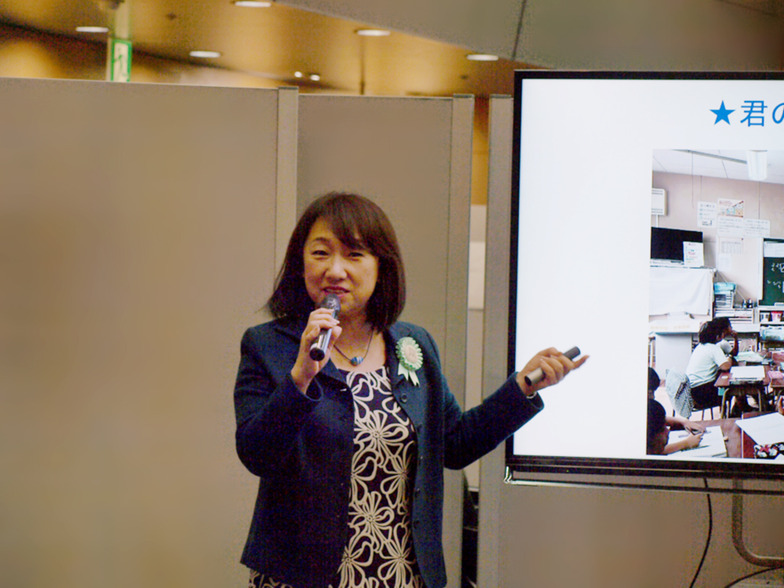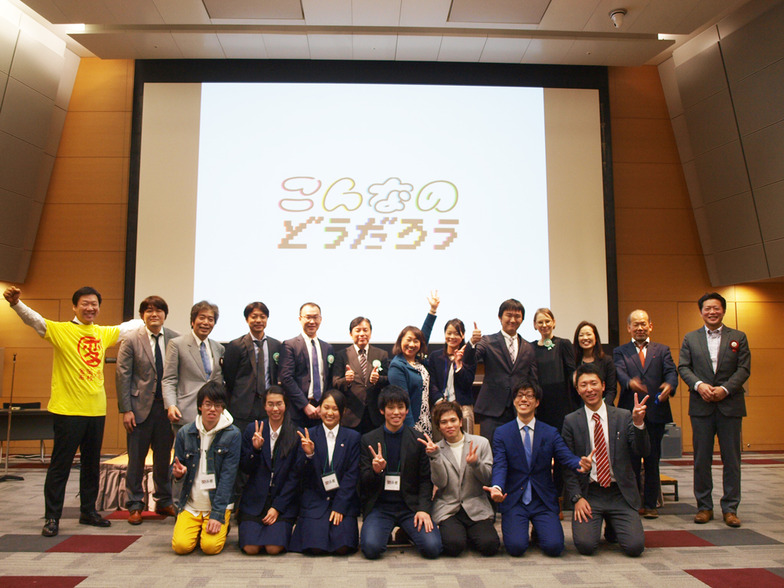Note: This website was automatically translated, so some terms or nuances may not be completely accurate.
Elementary school students holding meetings that put adults to shame

Toru Oyama

It has been one year since the DENTSU SOKEN INC. Active Learning "How About This ?" Research Institute was established. During that time, we've increasingly heard the keyword "active learning" in the news. Over this past year, through various initiatives, we've racked our brains and implemented ideas, true to the institute's name, asking "How about this?"
To present these results, we held the 'DENTSU SOKEN INC. Active Learning: How About This? Summit 2' on November 6 at Dentsu Hall in Shiodome, Tokyo.
It was a substantial event, featuring a total of 10 presentations over 8 hours. This time, we'll introduce the research results from the three schools that became our first-phase collaborative research partners, adding our thoughts on how these findings could potentially be applied in the business world.
The three schools participating in the first phase of the joint research program were Hachioji Municipal Nibukata Elementary School, Chuo Municipal Akashi Elementary School, and Tokyo Metropolitan Tama Science and Technology High School. At each school, based on the know-how and expertise—such as ideation and planning methods—cultivated by Dentsu Inc. through its advertising business and unique social contribution activities, they explored diverse teaching styles and research approaches.
Meetings that put adults to shame!
CM Applying CM Production Know-How to Everyday Lessons ~ Akashi Elementary School, Chuo Ward

Akashi Elementary School undertook research on "Fostering Children Who Learn Proactively and Collaboratively." To advance active learning within lessons, they utilized the expertise from "Advertising Elementary School." "Advertising Elementary School" is a social contribution activity conducted by Dentsu Inc., an educational program aiming to develop children's communication skills through creating commercials.
Within this program is an idea generation method called the "Pah-Gu-Gyu~ Method." "Pah" involves spreading ideas (brainstorming, etc.). "Gu" converges the ideas (concept development). Then, "Gyu~" squeezes out the best ideas to enhance their quality.
Mr. Miyauchi's goal was for children to acquire "thinking about thinking" by trying this know-how in regular classes. What actually happened?
It was implemented during a third-grade integrated studies lesson titled "The Exciting Friendship Project with the Kindergarten." Every year, the third graders at Akeishi Elementary go on a potato-digging field trip with the attached kindergarten.
This lesson project had them independently brainstorm and plan activities to enrich their interactions with the kindergarteners during the trip. They focused on what activities would be best and how to make them enjoyable.
The key element of the lesson is "brainstorming." A common pitfall in brainstorming sessions using sticky notes is when teachers simply say things like "Think harder," "Think more carefully," or "Think properly."
This approach fails to teach "how to think" and actually stifles the thinking process. By clearly presenting specific brainstorming rules and methods for "shifting perspectives" to spark ideas, children learn "how to think."
During brainstorming, never dismiss a friend's idea. Say "That's great!" Write down any thought that comes to mind on a sticky note. See someone else's idea and immediately add your own thoughts inspired by it. By following these rules and generating ideas based on "shifting perspectives," the children rapidly wrote down ideas for activities they could do with the kindergarteners.
The number? Over 30 ideas per team in just 10 minutes!
Ideas included teaching the kindergarteners how to cheer and play drums to liven up the kindergarten sports day.
An idea for a third-grade and kindergarten exchange event where they exchange business cards made on computers.
An idea to make teru teru bozu (rain charms) together to liven up the potato digging field trip.
And so on—various fun projects were born.
By adhering to the basic brainstorming rules and internalizing "how to think," they learn that no matter what challenges arise, shifting perspectives allows for endless ideas.
They're far more active than adults stuck in predictable meetings.
What we wanted to change wasn't the "lesson" itself, but the "teacher"!
Can Teachers and Children Change Through Lesson Plan B? ~ Hachioji Municipal Nibukata Elementary School

What happens in the education world. And what happens in the advertising business world. Realizing that what's taken for granted in each industry isn't actually a given, schools and Dentsu Inc. joined forces to combine their expertise, resulting in "Lesson Plan B."
Lesson plans are the schedules and progress charts teachers create for each class period. Most teachers create these lesson plans every year in a fixed format, as a matter of course.
But Principal Kiyosumi wondered if this revealed a certain complacency among teachers. He wanted to challenge what teachers considered "normal." To do this, he created the "Lesson Plan B-Side." If the lesson plan detailing the flow of the class is the A-Side, the B-Side adds seven items designed to prompt a re-examination of the lesson content to make it more student-centered.
For example, consider this science lesson for third graders: "Is there a difference between ground in direct sunlight and ground in shade?" But if you remove the "?" at the end, the question itself becomes the answer. Such questions are uninteresting. So the students don't listen to the teacher. And the teacher scolds them.
Is the problem or lesson even designed to spark the children's interest in the first place? That's where the B-side lesson plan comes in.
For example, the B-side includes items like:
"Why not start with the assumption that some children have absolutely no interest in the lesson?"
"Let's incorporate fun games and play elements into the lesson."
"Let's be creative with the questions we ask the children."
How can we get children who show no interest in sunlit and shaded areas to pay attention? Is there a way to ask questions without directly mentioning the concepts we want to teach, like sunlit and shaded areas? Could we incorporate game elements into science lessons? After reviewing Side B, the science teacher who thought this way decided to change the problem as follows:
"Let's see who can find more of the hottest and coolest spots in school than their friends!" By the time this question was posed, the children had already started discussing where they thought those spots might be. The teacher had successfully created a state of excitement among the children.
The greatest feature of the B-side lesson plan lies not in changing the "lesson" itself, but in changing the teacher's assumptions.
Finding your own "B-side" and changing the assumptions you take for granted in your daily work. This might be important not just for teachers, but for everyone.
We also developed the evaluation method together with the students.
"Assessable Lessons" and "Non-Assessable Lessons" ~ Tokyo Metropolitan Tama Science and Technology High School

Tama Science and Technology High School is designated as a Super Science High School. How to convey ethical perspectives in science and technology to students? We decided to utilize active learning for this foundational ethics education.
However, lessons using specialized textbooks proved difficult for students to grasp... Struggling, Mr. Morita considered using the "Ultra Seven" drama series as teaching material, believing it could help students critically interpret the development of Japanese science and technology.
He selected episodes suitable for discussing ethics for students to watch, and frequently implemented collaborative learning workshops designed to help them develop problem-solving thinking skills. He also incorporated ideation techniques honed by Dentsu Inc. in business into the lessons.
While the approach yielded some positive results, the teacher felt something was off. The issue was the difficulty of evaluation. In collaborative learning, does the person who speaks up always receive a good evaluation? Does someone who doesn't speak up get a bad evaluation...?
This led to the trial of a new evaluation system. While the teacher set the core evaluation criteria, students themselves set personal goals like "I want you to focus on my growth in this area." The approach incorporated elements of evaluation methods practiced in corporate settings.
Students who struggled a bit with communication set goals like "I want to improve my presentation skills." Others, working with partners on experiments, set goals like "Ensure the safety of our experiments."
Then, after teachers and students held interviews about the goals they had set, they developed an evaluation method tailored to each individual.
Even so, Professor Morita finds evaluating active learning challenging. Frankly, he wonders if it might be acceptable to have classes without evaluation at all.
Teachers and students share some similarities with the relationship between a boss and their subordinates. How do we evaluate outcomes that can't be measured by numbers? Active learning might just be showing us some hints in that area.
To spread the ripples of "What about this?"
Through collaborative research, we discovered that many methods we take for granted in advertising actually offer fresh insights when viewed from an educational perspective.
However, these methods did not originate with the recent popularity of the term "active learning." Such approaches have existed for a long time, not just in advertising but across various fields. It's just that now, in this era, they happen to be called active learning.
Hints are always around us. Moving forward, we will continue to find these hints together with teachers and students, think about "What about this?" for active learning, and share our ideas with the world.
Beyond this joint research, the lessons we conduct at our practice school are gradually being featured in local television and newspapers. We believe this is creating small ripples of change.

We will share the latest updates on our Facebook page. We also encourage you to throw a stone at us—share your thoughts and insights.
We would appreciate it if you could contact us via email ( d-ii@dentsu.co.jp ) with any opinions or inquiries.
Thank you for your continued support.
Was this article helpful?
Newsletter registration is here
We select and publish important news every day
For inquiries about this article
Author

Toru Oyama
Dentsu Inc. B Team / Active Learning "What About This?" Research Institute. Leveraging advertising creative skills honed as a copywriter, currently engaged in diverse and enjoyable activities including new ventures, corporate training, and workshops. Launched "PLAY FIRST," a design unit developing games and educational tools based on the concept of "starting with play." Specializes in designing play and projects by working backward from the ideal experience. Left Dentsu Inc. in March 2023.
